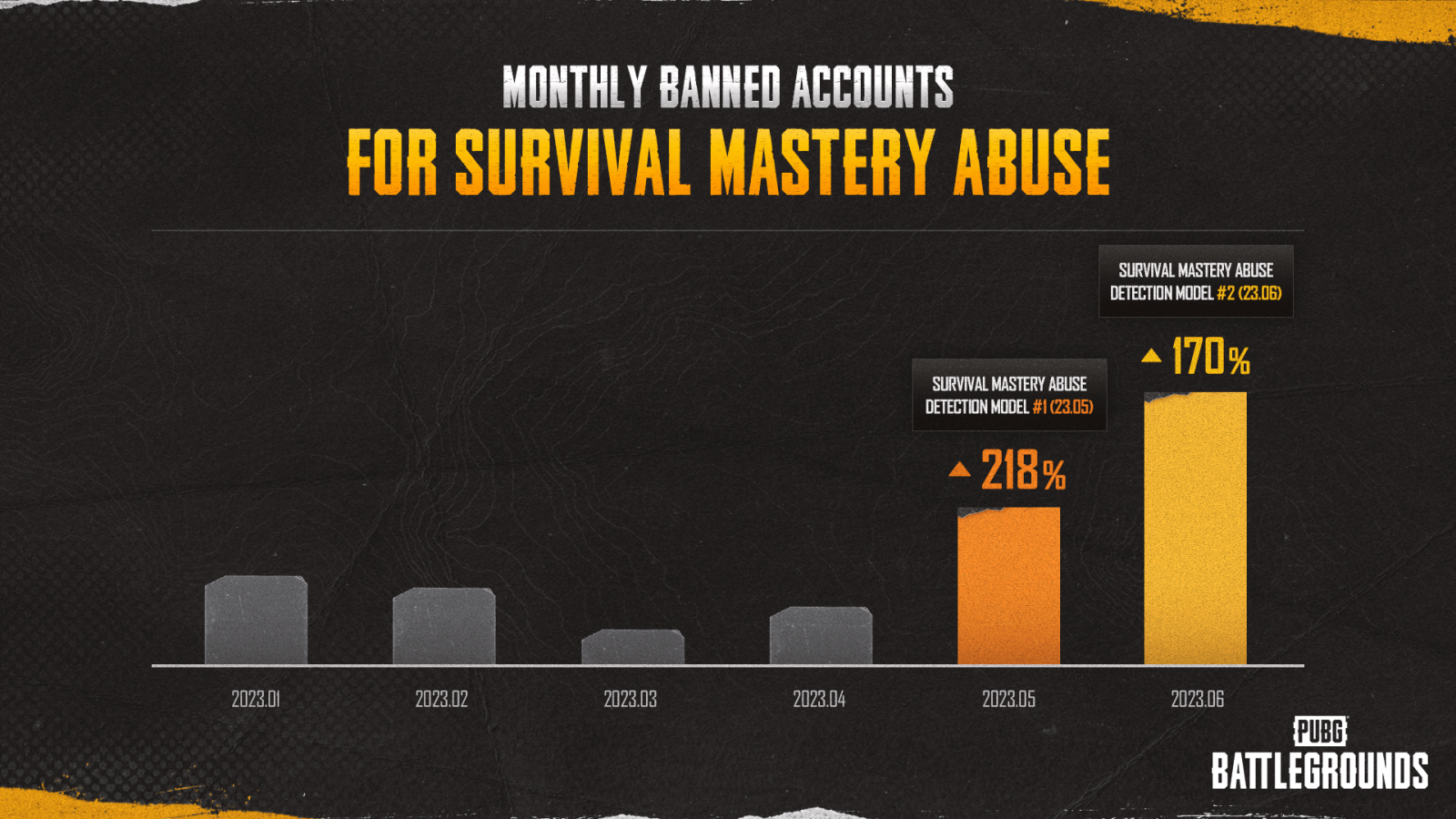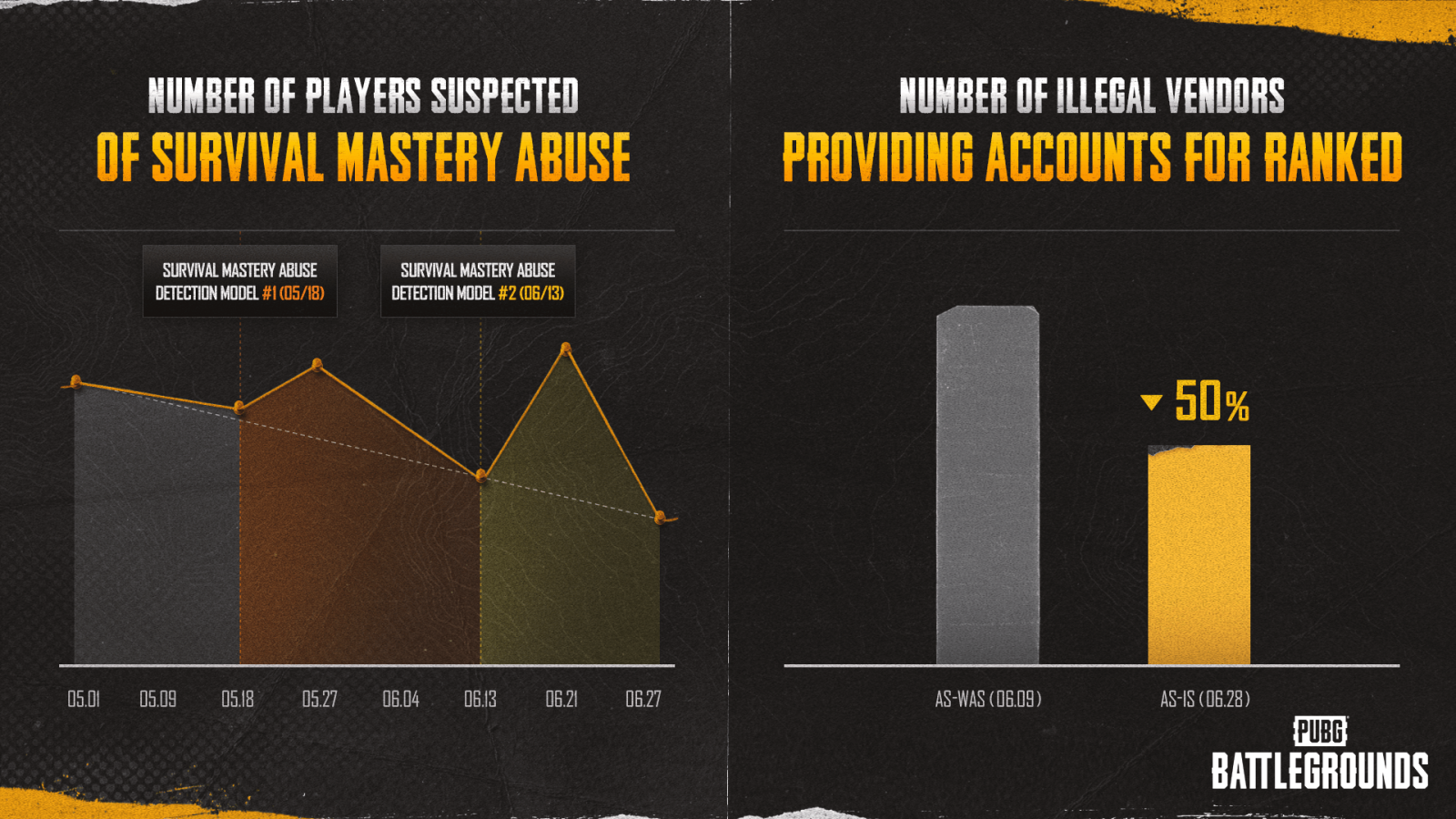Dev Letter: Tackling the Supply of Accounts Used for Cheating
Every week, the PUBG: BATTLEGROUNDS Anti-Cheat Team identifies and imposes permanent bans on an average of 60,000 to a maximum of about 100,000 accounts involved in the use, distribution, or sale of illegal software. Despite the significant number of bans, players continue to encounter cheaters. You might have wondered why progress seems slow, considering the large quantity of accounts banned each week. We have also recognized that a more comprehensive approach was necessary to address this issue effectively. Rather than solely relying on permanent bans, we realized the need for a fundamental solution involving the analysis and tracking of accounts utilizing illegal software. Given the severe impact of cheating on ranked matches, our focus today will be on discussing the accounts that are deliberately supplied for the purpose of cheating in ranked.
The Supply Routes for the Accounts Used for Cheating in Ranked
In ranked matches, there exist various types of accounts that utilize illegal software. However, the majority of these accounts can be classified into two primary categories: 1. Hijacked accounts and 2. Accounts that exploit the Survival Mastery Level system.
Let's begin by examining hijacked accounts. Through the analysis of data pertaining to permanently banned players from 2022 onwards, it has been observed that approximately 85% of the accounts permanently banned within the ranked player base were created prior to PUBG's transition to a free-to-play model in January 2022. This does not mean that accounts that had been consistently using illegal software since before 2022 have only now been detected. It rather implies that it is highly probable that cheaters obtained other players' accounts and started using illegal software on those acquired accounts.
Moving on, there are accounts that exploit the Survival Mastery Level system. Alongside the sale of illegal software, certain illicit vendors have established so-called 'workshops' where players can gain Mastery Level experience points through repetitive actions facilitated by macros. These vendors offer newly created accounts that have achieved the required level 80 to partake in ranked matches. Alternatively, if a hijacked account is at a lower level, they sell it once it reaches level 80.
Having analyzed these two categories, it has become evident that addressing the supply routes of these accounts used for cheating is crucial in establishing a fair gaming environment.
Progress on Countermeasures
To begin with, let's discuss our countermeasures to address Survival Mastery Level abuse. Previously, our approach primarily focused on specific patterns of abuse exhibited by players. This involved monitoring abnormal behavior, reviewing community reports, and analyzing the characteristics and patterns of abuse to establish ban criteria. However, we encountered two issues with this approach. Firstly, there was a possibility of overlooking new forms of abuse until they were reported and confirmed. Secondly, the low accuracy of abuse detection made it difficult to apply strong measures such as permanent bans.
To enhance our countermeasures, the PUBG: BATTLEGROUNDS Anti-Cheat Team initiated the development of a machine learning model that could learn the characteristics and patterns of Mastery Level abuse. Utilizing this model, we have expanded and refined the criteria for detecting disruptive players throughout May and June of this year. As a result, we have observed several positive changes. The number of bans issued against disruptive accounts has increased by over threefold compared to the period before the introduction of this model. Furthermore, the internal monitoring process for suspected disruptive players/accounts has shown continuous improvement, and the number of monitored account vendors has decreased. We have also observed an increase in the prices of these accounts.


Now, let's delve into our strategies in regard to hijacked accounts. As many players have pointed out, hijacked accounts have been causing numerous issues, including the use of illegal software. Although considerable efforts have been made to address this problem, they have proven insufficient. In response, we initiated the development of a model capable of detecting hijacked accounts in addition to the model that identifies Survival Mastery Level abuse. Currently, we have reached a stage where we can ascertain the scale and attributes of these accounts and leverage this information effectively. Moving forward, our plan entails enhancing the accuracy of the model and employing it for diverse anti-cheat measures and services.
Concluding Today's Anti-Cheat Dev Letter
As discussed today, our current focus revolves around analyzing and addressing the underlying issues that give rise to cheating in ranked matches. Our aim is to disrupt the supply of accounts used for cheating by targeting the source.
As mentioned in our previous Anti-Cheat Dev Letter, we need your assistance to combat those who disrupt the gaming environment. Ensuring account security plays a vital role in preventing cheaters from hijacking accounts. Therefore, we urge you to prioritize account security to safeguard your valuable account from abuse. Specifically, for Steam players, please make sure that you have set up the Steam Guard Mobile Authenticator. We assure you that we will continue to diligently monitor and enhance our systems, ensuring that your efforts to protect your account are not in vain.
Stay tuned for future updates from the PUBG: BATTLEGROUNDS Anti-Cheat team as we will continue to share more about our ongoing efforts and progress!








Comments